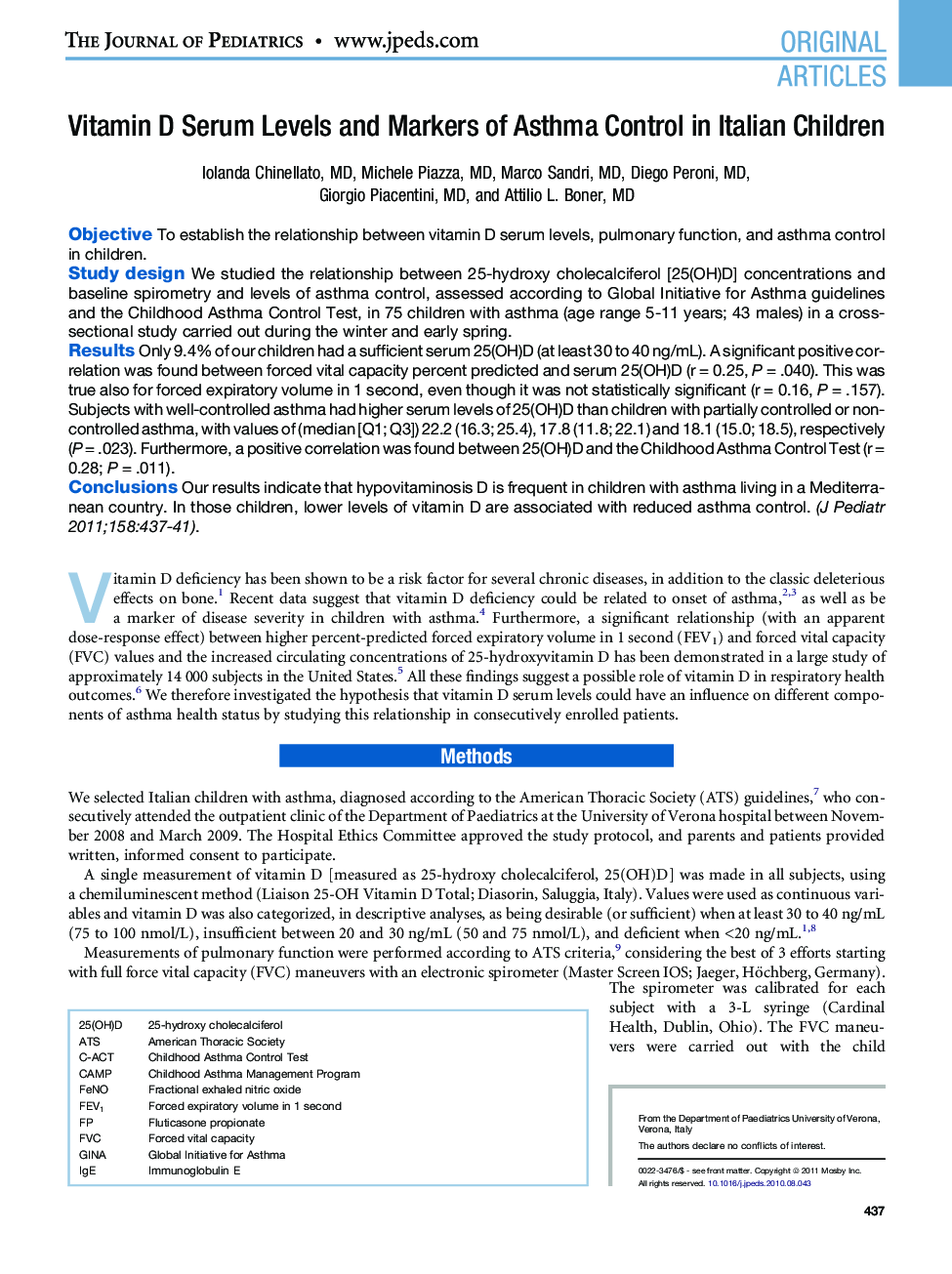| Article ID | Journal | Published Year | Pages | File Type |
|---|---|---|---|---|
| 4166224 | The Journal of Pediatrics | 2011 | 5 Pages |
ObjectiveTo establish the relationship between vitamin D serum levels, pulmonary function, and asthma control in children.Study designWe studied the relationship between 25-hydroxy cholecalciferol [25(OH)D] concentrations and baseline spirometry and levels of asthma control, assessed according to Global Initiative for Asthma guidelines and the Childhood Asthma Control Test, in 75 children with asthma (age range 5-11 years; 43 males) in a cross-sectional study carried out during the winter and early spring.ResultsOnly 9.4% of our children had a sufficient serum 25(OH)D (at least 30 to 40 ng/mL). A significant positive correlation was found between forced vital capacity percent predicted and serum 25(OH)D (r = 0.25, P = .040). This was true also for forced expiratory volume in 1 second, even though it was not statistically significant (r = 0.16, P = .157). Subjects with well-controlled asthma had higher serum levels of 25(OH)D than children with partially controlled or noncontrolled asthma, with values of (median [Q1; Q3]) 22.2 (16.3; 25.4), 17.8 (11.8; 22.1) and 18.1 (15.0; 18.5), respectively (P = .023). Furthermore, a positive correlation was found between 25(OH)D and the Childhood Asthma Control Test (r = 0.28; P = .011).ConclusionsOur results indicate that hypovitaminosis D is frequent in children with asthma living in a Mediterranean country. In those children, lower levels of vitamin D are associated with reduced asthma control.
